In April 2023, a Hooded Vulture (Necrosyrtes monachus) was tagged in Morocco at the Jbel Moussa Protected Area. It was the first time this Critically Endangered species, endemic to sub-Saharan Africa, was seen in northern Morocco. Surprisingly, the same bird was reported in Northern Spain a couple of days ago, which might be the first observation of a wild Hooded Vulture so far north in Europe!
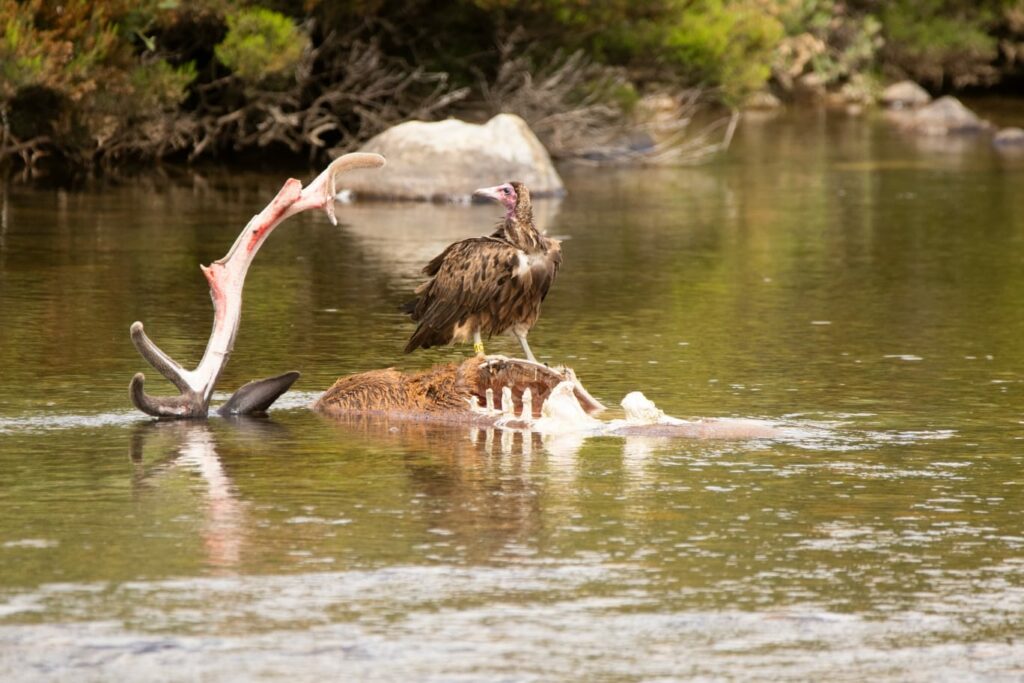
The first Hooded Vulture captured and ringed in Morocco
On 22 April 2023, an immature Hooded Vulture was observed in the western part of the Jbel Moussa Protected Area, an important site in the Tangier Peninsula (Northern Morocco) for migratory birds. The presence of the species in northern Africa is accidental; despite several records in Northern Mauritania, there have been only three records in Morocco since 1955 (El Kamlichi et al., 2023).
The Hooded Vulture was flying amid a group of Egyptian Vultures (Neophron percnopterus). One day after, the bird was spotted at the feeding station of the Jbel Moussa Vulture Rehabilitation Centre and was captured. Rachid El Kamlichi and other colleagues from AMPOVIS (Association Marocaine de Protection des Oiseaux et de la Vie Sauvage), under the supervision of ANEF, analysed the birds’ health condition and marked it with a yellow PVC ring (MO4 black). The bird was released on 24 April and remained in the same area until 8 May.
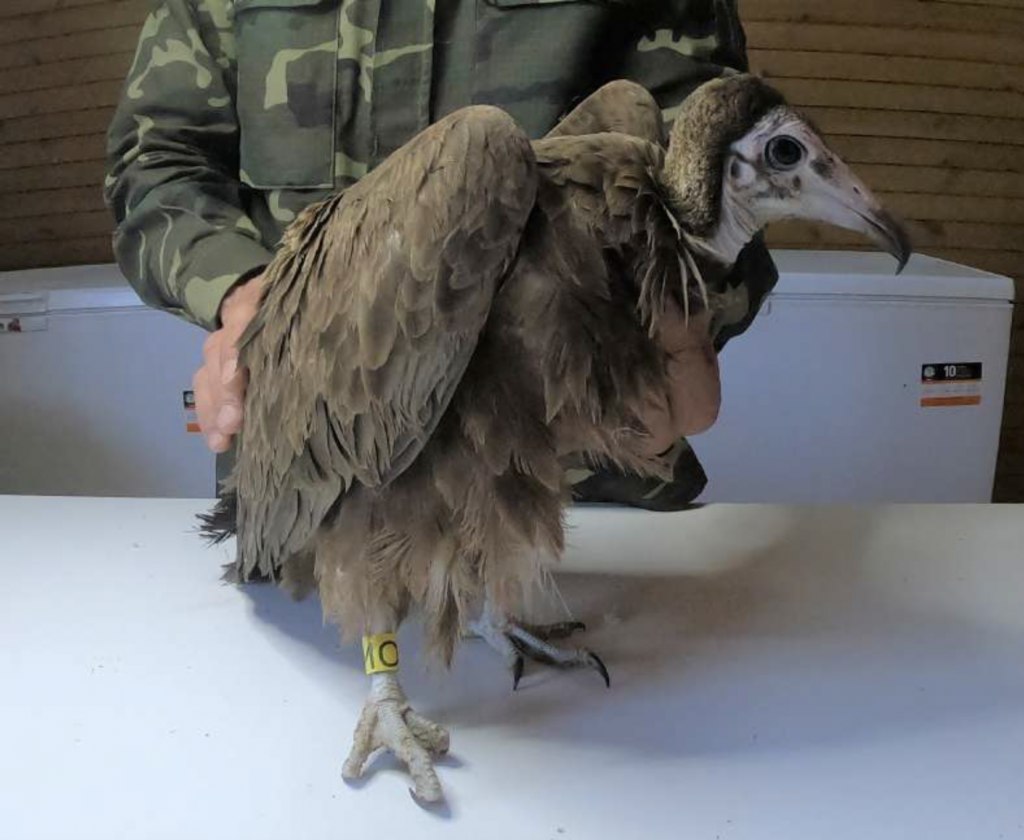

The Hooded Vulture is now visiting Northern Spain
Finally, after almost two months without any idea of its movements, the bird was spotted in Northern Spain by Jorge Migoya Sánchez and reported by Fernando Jubete from the Asociatión de Naturalistas Palentinos. The Hooded Vulture was found at “Valle de Pineda” in Vidrieros, Palencia. No further observations have been recorded since then.
About the Critically Endangered Hooded Vulture
The Hooded Vulture is a smaller, mostly brown vulture exhibiting a small and naked pink head and a slender black beak. A widespread resident of sub-Saharan Africa, its home range spans from dense forest areas in Central Africa to grasslands, wooded savannahs and semi-desert regions. On the West Coast, it is often associated with human settlements, whilst in Southern and Eastern Africa, it tends to avoid humanised areas, often breeding in large trees along river courses (Vulture MsAP).
According to the Eurasian Multi-species Action Plan to Conserve African Eurasian Vultures (Vulture MsAP), the Hooded Vulture is a Critically Endangered species (IUCN Red List) that has faced a rapid decline (of around 83%) in the last three generations (Ogada et al. 2016, Vulture MsAP). The estimated population of 197.000 individuals is mainly threatened by belief-based intentional poisoning, which seriously compromises all African Vulture species. Recently in Guinea-Bissau, a man was sentenced to four years in prison and a fine for killing 50 Hooded Vultures and other raptors, the first fine ever issued in the country for wildlife crime. Unintentional poisoning and the decline in food availability are also stress factors affecting the survival of African Vulture species.
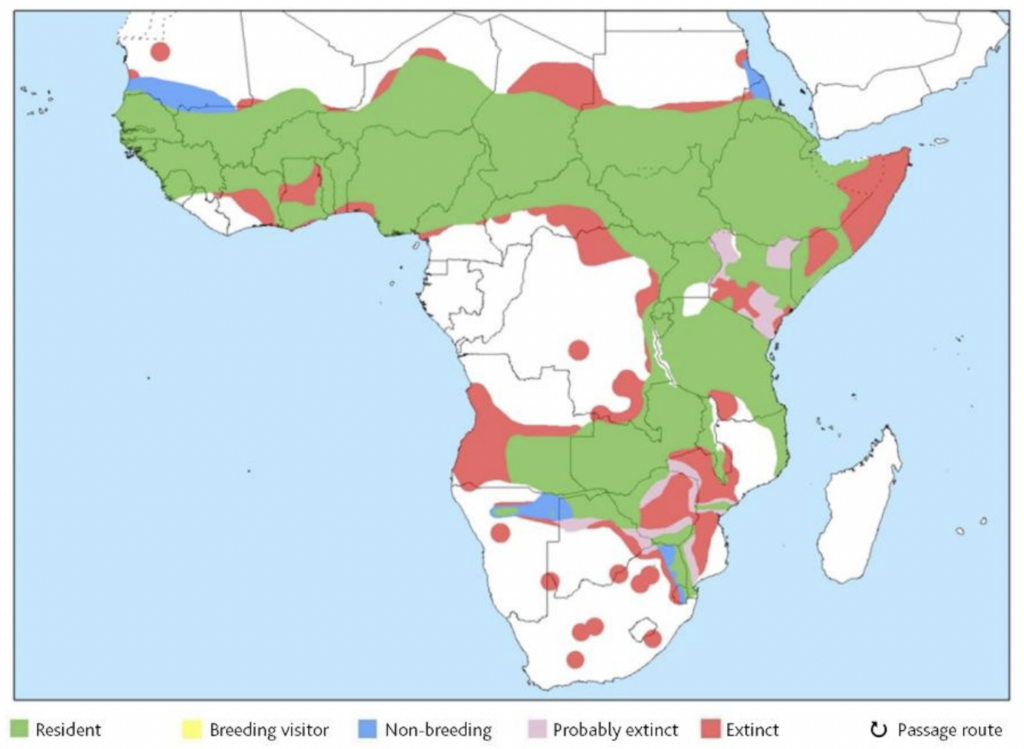

Why are sub-Saharan Vultures coming up north?
After capturing and tagging the bird, Rachid El Kamlichi and Karim El Haoua published a brief article about this first record of a Hooded Vulture in northern Morocco. The authors suggest that its presence is
“probably related to the influence that European populations of Egyptian Vultures and Griffon Vultures (Gyps fulvus) wintering in the Sahel have on other species on their return from Africa.”
Rachid El Kamlichi and Karim El Haoua
The phenomenon is also observed with other species, such as the White-backed Vulture (Gyps africanus) and the Rüppell’s Vulture (Gyps rueppelli). Less than two years ago, a White-backed Vulture was GPS-tagged in Tarifa (Spain) and had been vastly exploring the Iberian Peninsula. There is also a record of an individual venturing into Italy.
As for the Rüppell’s Vulture, records of the species have become more frequent over the last decade, with 11 individuals observed in 2011 and 103 in 2022 (El Kamlichi et al., 2023). There are records of a new colony established in southern Spain, close to Málaga, including hybrid pairs between a Griffon and a Rüppel. In Portugal, at least one Ruppel has been tagged (and moved back to Africa), and records are increasing in the last couple of years, especially in the South. Following this trend, for the first time, the Vulture Conservation Foundation included Rüppel’s Vulture in the 2022 Report on vulture population estimates in Europe.
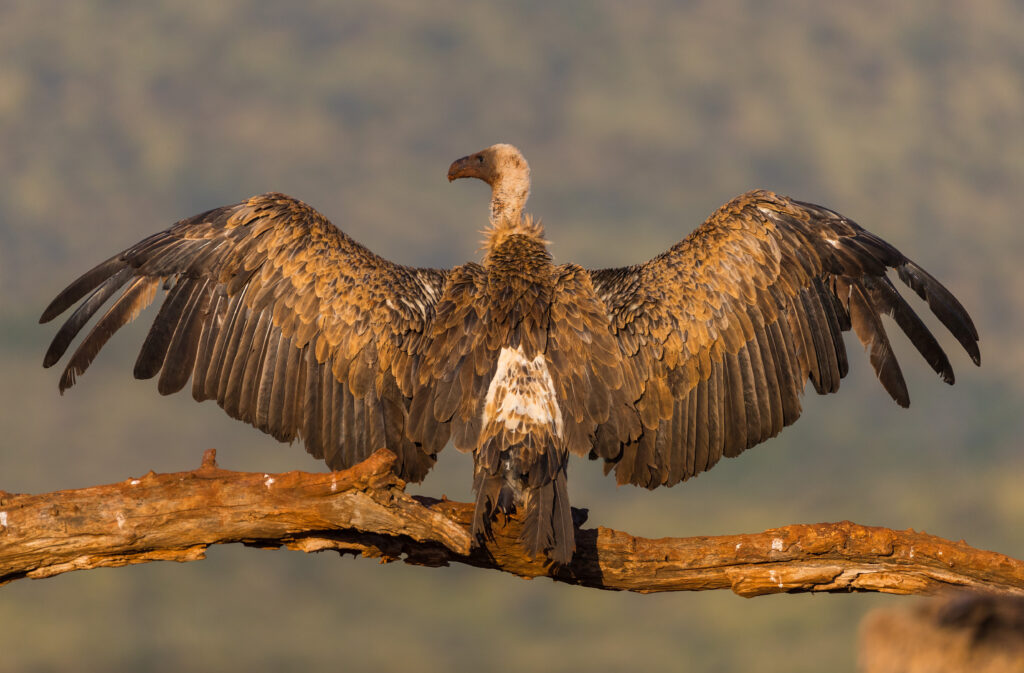
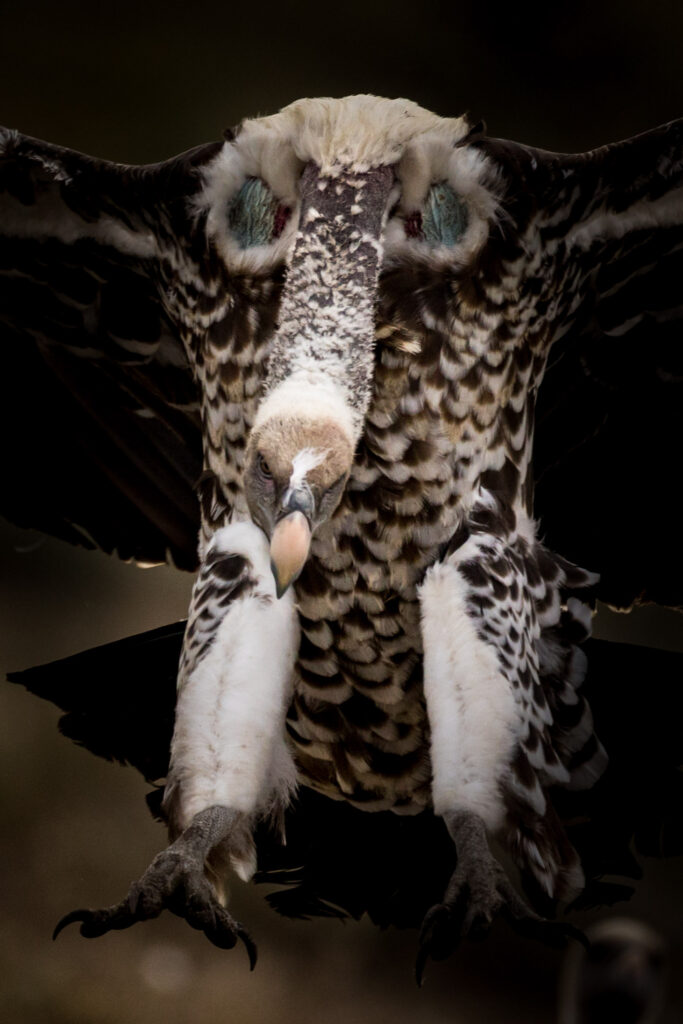
The higher occurrence of Sub-saharan African species in northern countries calls for further research on their movements, food abundance and interaction with European vultures wintering in Africa. The mid-term review of Vulture MsAP implementation, in which the VCF is currently involved, is an opportunity to analyse and better understand this increase of African vultures seen far north from their typical home range.
Sources:
- El Khamlichi, Rachid and El Haoua, Mohamed K. First record of the Hooded Vulture Necrosyrtes monachus in Northern Morocco (2023), Eléments d’Ornithologie Marocaine 2023. Download it here.
- Facebook publication of Fernando Tubete
- Ebird.org

